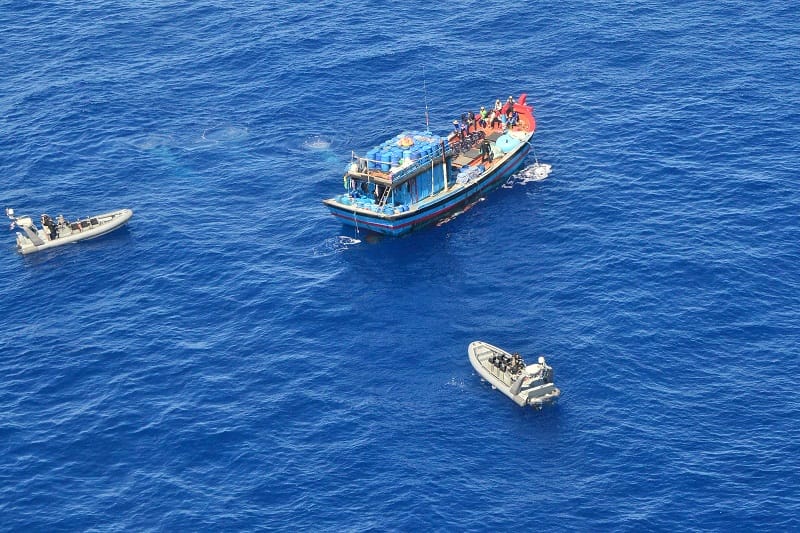The Indian Ocean has long served as a perilous route for Illegal boat migration. Illegal boat migrations from Sri Lanka to Australia surged during the nation’s civil war from 1983 to 2009, led by conflict related issues. This period saw high maritime activity. After the end of war and peak in 2009, these attempts declined and stabilized. But not for long. By 2012, Sri Lanka became one of the top four countries for illegal arrivals. Over 736 migrants arrived after the war. 825 illegals arrived between 2011–2012. Despite strong and effective border controls, a massive increase occurred due to Sri Lanka’s economic crisis, with more than 1,000 attempts in 2023.
According to BBC there were over 500 Sri Lankans intercepted off Western Australia in 2022, up from 50 in 2019. Australia’s Department of Foreign Affairs and Trade (DFAT, 2024) noticed this shift and the Australian government sent AUD 75 million in humanitarian aid, economic push factors reduce efforts. The Sri Lanka Navy’s increased patrols, intercepting 1,507 in 2022 compared to 400 in 2019. It showed the size of this exodus.
2022 saw a significant rise of illegal migration towards Australia. The Sri Lankan Navy arrested 51 people on July 3, 2022, for attempting to illegally migrate to Australia. Smugglers used multiday fishing trawlers for this journey. That was the fourth such attempt within a week, driven by Sri Lanka’s ongoing economic crisis. Earlier, on July 2, 24 individuals were detained on the western coast while preparing for an illegal sea journey to Australia. On June 27 and 28 more than 100 illegal immigrants were arrested. The Navy actively confronted these attempts. Australia has provided substantial assistance, including a multi-million-dollar fuel grant to the Sri Lanka Navy and Sri Lanka Air Force since 2022, and donated a King Air 350 maritime surveillance aircraft to the Sri Lanka Air Force, which supports maritime surveillance and security. Additionally, Australia launched the Zero Chance Campaign (Even before the crisis) , an initiative to deter potential migrants by highlighting the dangers of illegal sea journeys and the unlikelihood of resettlement in Australia.
In an exclusive interview with Westvu during the Sri Lanka Coffee Festival 2025 in Kandy, we asked Deputy High Commissioner Kapur about Australia and Sri Lanka’s collaboration to combat illegal migration, and she stressed the strength and longevity of their relationship. “For years now, Sri Lanka and Australia have worked together really closely to try and prevent illegal migration,” she said. “It’s a really sad story… people spend money on these voyages that are very risky, and a lot of people end up dying at sea. But I’m pleased to say that the numbers have really come down.”
Kapur also pointed out the importance of legal migration pathways and Sri Lanka’s improving stability. “People know that they won’t be resettled in Australia [through illegal means]. There are other pathways for migration, legal pathways, and I think that message is getting through,” she noted. “Most importantly, I think Sri Lanka is doing better as a country. It’s a more stable country.”
Global success story
The Sri Lanka-Australia collaboration against illegal migration and its results are a global success story in confronting illegal migration and human trafficking. Unlike similar challenges at the US-Mexico border, India-Bangladesh border, Poland-Belarus border, and the English Channel, where a lack of collaboration between nations has hindered efforts to stop illegal migration and human trafficking, the partnership between Australia and Sri Lanka stands out. By combining maritime surveillance, economic aid, and impactful awareness campaigns, the two nations have achieved tangible results. The world has a lesson to learn from this collaboration, a model of compassion, coordination, and commitment that is saving lives and setting a standard for addressing one of the most pressing global challenges of our time.





